- Date
- Thursday, March 7, 2024
- Author
- Ian Snowsell, Avalanche Forecaster
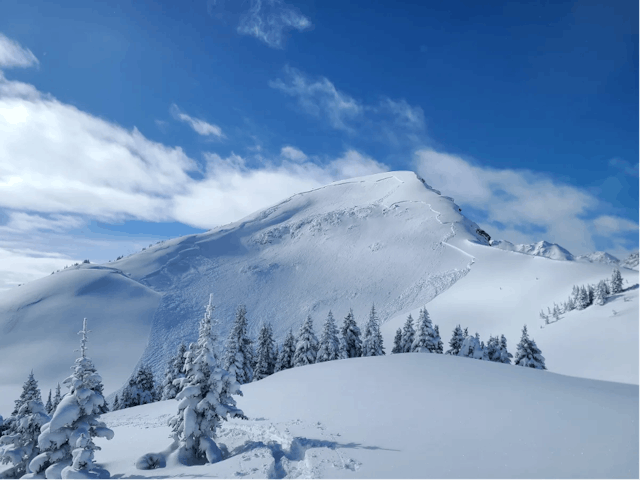
March 3, 2024: Remote triggered from the lookers left, low angle ridge by a group of ski tourers. Cariboo Mountain (MIN user CRAIG HARTMETZ).
As the Special Public Avalanche Warning (SPAW) ends on March 7 for regions west of the Rockies, it's important to understand that dangerous avalanche conditions are expected to persist in many areas. Buried weak layers within the snowpack remain a significant risk going forward. Apart from in some of our coastal regions (where stormy weather is about to elevate avalanche danger), we are transitioning into a period where it is becoming less likely you’ll trigger an avalanche, but the consequences of an avalanche could still be very high. These persistent weak layers continue to demand respect and it may take weeks or more for these layers to stabilize. Conservative decision-making will remain essential, even with avalanche danger ratings potentially decreasing in some regions.
How to manage the risk
- Remain vigilant and don’t overlook signs of heightened avalanche danger, like fresh avalanches, whumpfs, or shooting cracks. As the weak layer continues to get buried deeper, signs of instability may be less frequent and less obvious.
- Patience will be critical. Don’t be lured into dangerous terrain when there is new snow or sunny weather.
- Be diligent about terrain choice. Stick to low-angle terrain without terrain traps, such as cliffs or gullies.
- Minimize overhead exposure. There is lots of recent evidence of remotely triggered avalanches and avalanches that are running far and pulling back into low-angle terrain.
The following are examples of some of the persistent slab avalanches we have been seeing recently. Avalanches of this nature are expected to persist so continue to check the bulletin daily to see how conditions are evolving and use this to plan your objectives.
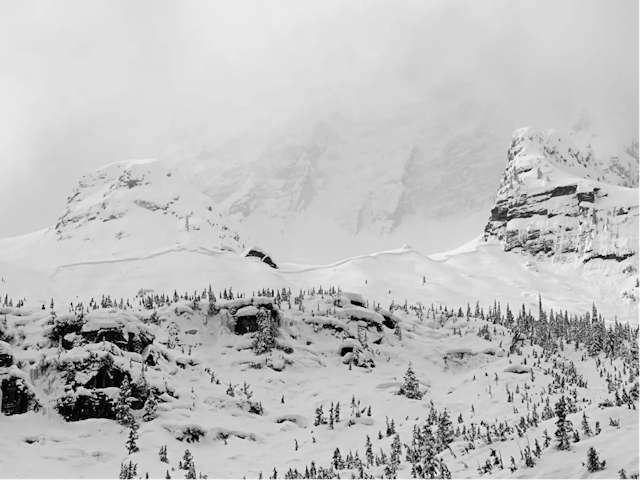
March 2, 2024: A large natural avalanche that propagated across the entire feature. Glacier National Park (MIN user CCMSKI)
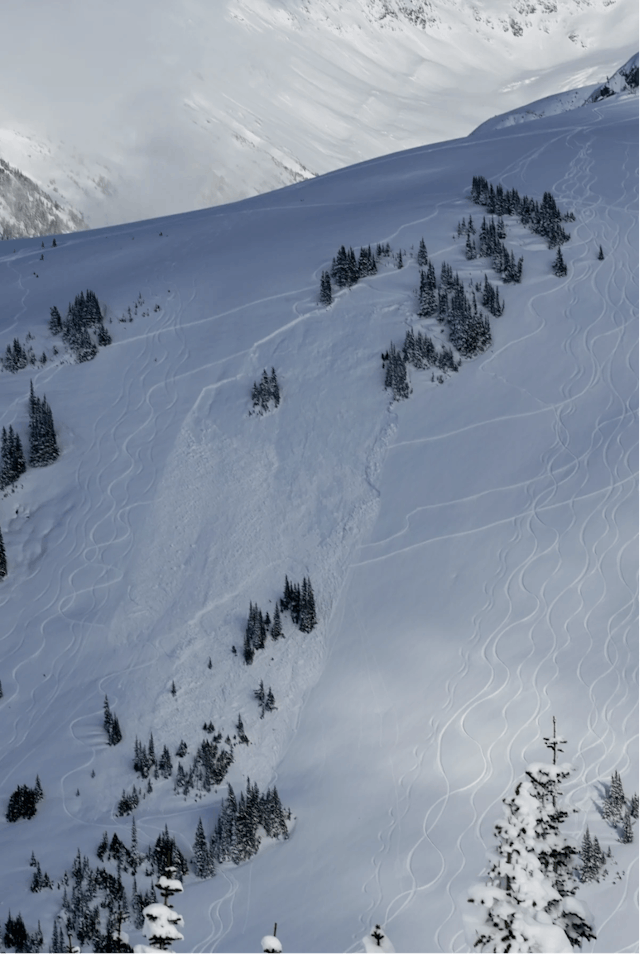
March 5, 2024: Skier-triggered size 2 avalanche in the Sea to Sky area (MIN user ERIK.EP).
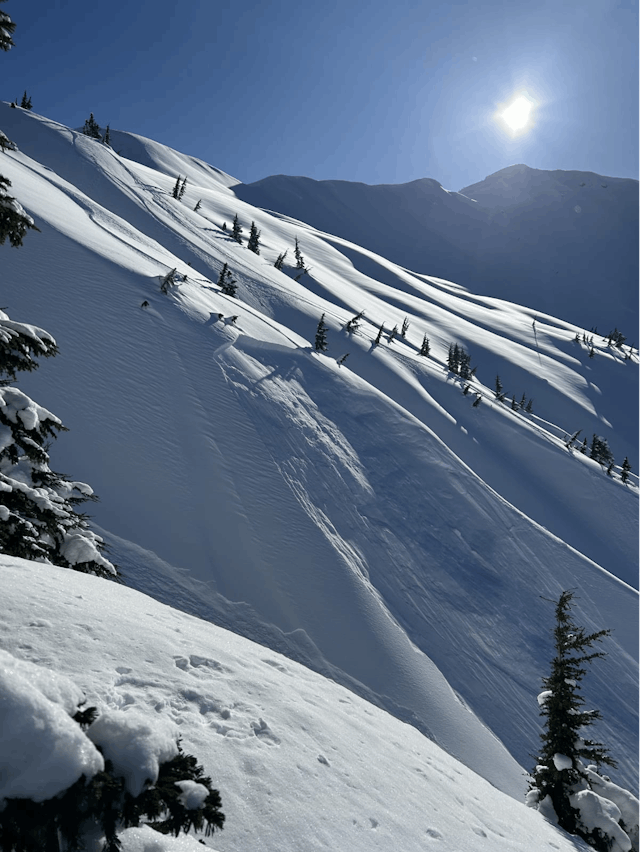
March 4, 2024: Remotely triggered by a ski tourer in the North Coast mountains (MIN user LAMONTAGNE.YANN).

March 4, 2024: Remote triggered large avalanche in the North Purcells (MIN user COLE).
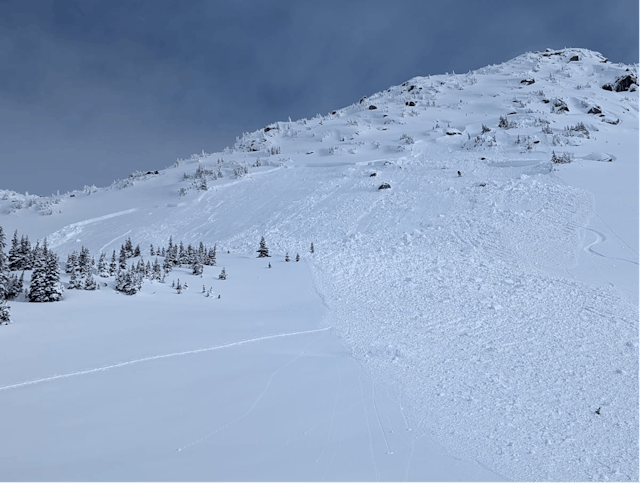
March 4, 2024: Rider reported no signs of instability in low angle terrain. While stepping out into steeper terrain remote-triggered this avalanche, another size 1 avalanche was sympathetically released just outside the photo. Duffey Lake area (MIN user CHRISRSMITH12).

March 3, 2024: A wide-propagating avalanche triggered by a snowmobile rider in the South Purcells (MIN user SCOTT.HICKS).
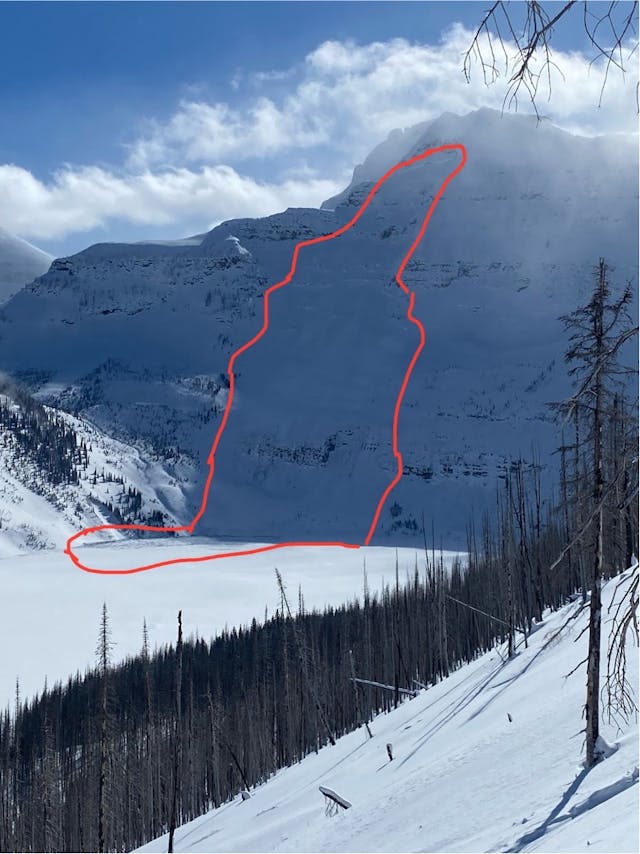
March 5, 2024: A very large natural avalanche broke ice on the lake below up to 1 km away. Waterton National Park.